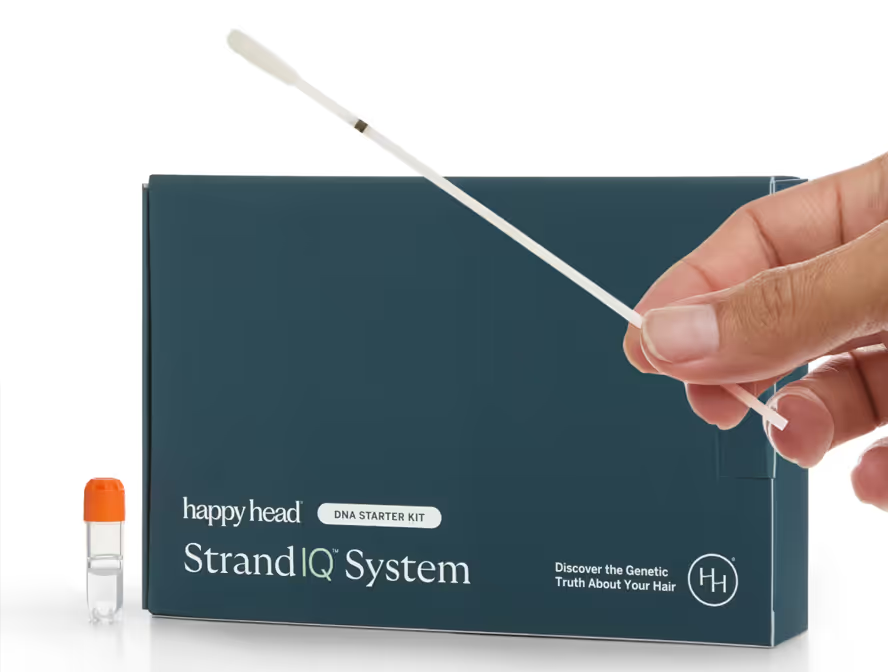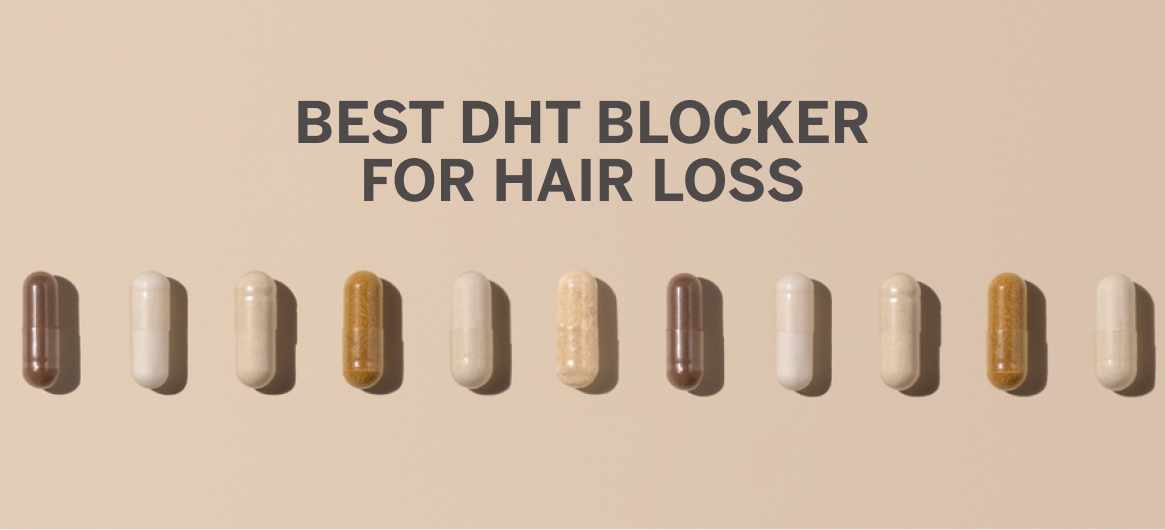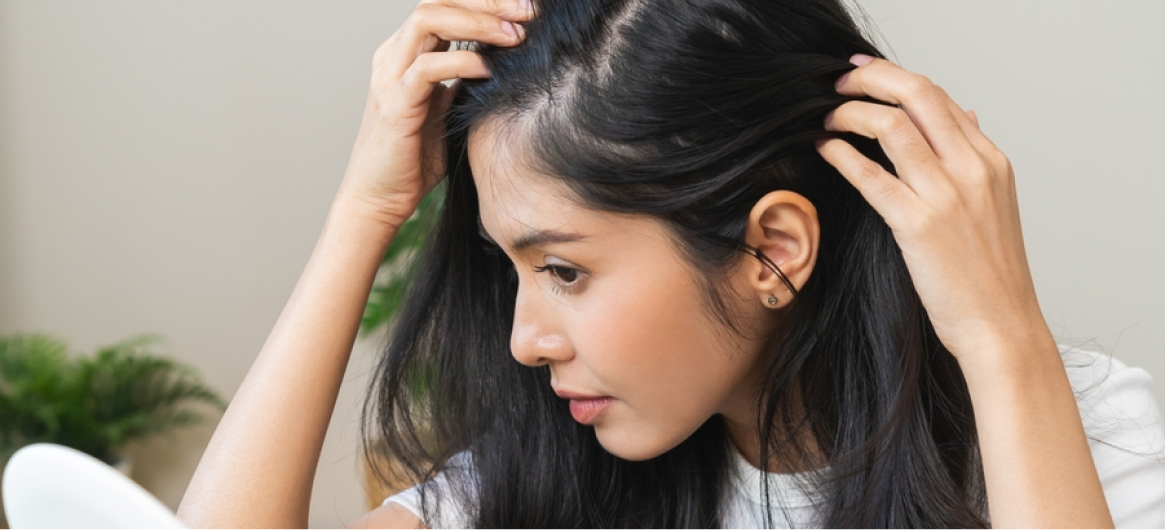Using topical dutasteride for hair growth can be an effective solution for those seeking a focused, science-backed approach to combating hair loss.
Designed to target the underlying hormonal causes of androgenetic alopecia, this innovative treatment combines precision with practicality, delivering therapeutic benefits directly to the scalp.
Unlike oral medications that affect the entire body, topical formulations emphasize localized action, making them an appealing option for those concerned about systemic side effects.
As interest grows in personalized and minimally invasive treatments, topical dutasteride stands out for its ability to address hair loss effectively while aligning with modern patient preferences.
Discover what makes topical dutasteride for hair growth a valuable tool for those with hair loss, how it works, how its targeted action compares to other treatments, guidelines for use, and where to obtain a prescription.
What Is Topical Dutasteride?
Topical dutasteride is a medication applied directly to the scalp to treat hair loss, particularly androgenetic alopecia, also known as male or female pattern baldness. Unlike oral medications, topical applications target the affected area without significantly affecting the rest of the body.
Dutasteride works by inhibiting the conversion of testosterone to dihydrotestosterone (DHT), a hormone that shrinks hair follicles and leads to hair thinning and loss. By reducing DHT levels in the scalp, topical dutasteride can promote hair regrowth and slow down the progression of hair loss.
The mechanism of topical dutasteride differs from its oral counterpart. While both forms inhibit the enzyme 5-alpha-reductase, which is responsible for converting testosterone to DHT, the topical application focuses on the scalp's affected area.
This localized action minimizes the potential systemic side effects associated with oral dutasteride, so it is ideal for those seeking an effective hair loss treatment with fewer risks.
Additionally, the application method allows for a more direct approach, potentially increasing the treatment's efficacy in targeted areas.
The formulation of topical dutasteride often combines the active ingredient with other supportive components to enhance absorption and effectiveness.
Products such as Happy Head's Dutasteride & Minoxidil Topical Solution blend dutasteride with minoxidil, another FDA-approved ingredient known for stimulating hair growth.
This combination targets hair loss from multiple angles to provide a comprehensive approach to treating thinning hair. By integrating these components, the formulation delivers a balanced regimen that can address the hormonal and circulatory factors contributing to hair loss.
Benefits of Topical Dutasteride for Hair Loss
Topical dutasteride offers several advantages in treating hair loss, particularly androgenetic alopecia.
The primary benefit is its effectiveness in directly targeting the scalp's DHT levels. Studies have shown that reducing DHT locally can significantly improve hair density and thickness.
By applying dutasteride topically, users can experience hair regrowth in areas affected by pattern baldness without exposing the entire body to the medication. This localized treatment ensures the active ingredients are concentrated where they are most needed.
This method offers an advantage over oral medications by reducing the risk of systemic side effects such as hormonal imbalances or sexual dysfunction. Since the medication is concentrated on the scalp, its absorption into the bloodstream is minimized.
Another benefit is the potential for combination therapies. Products containing both dutasteride and minoxidil capitalize on the synergistic effects of both ingredients.
Minoxidil is a vasodilator that improves blood flow to hair follicles, promoting growth. When combined with dutasteride's DHT-blocking action, the result can be more significant hair regrowth than using either treatment alone.
Topical dutasteride provides a convenient and straightforward application method. It can be easily integrated into daily routines, meaning users are more likely to stick with the treatment, thereby maximizing its potential benefits.
How To Use Topical Dutasteride Safely
Before starting treatment, consult a dermatologist to determine the appropriate concentration and formulation for your specific condition.
Custom dutasteride solutions can be created to offer personalized formulations based on factors such as age, gender, and the extent of hair loss.
Generally, the medication is applied once or twice daily to the affected areas of the scalp. To maximize absorption, ensure that the scalp is clean and dry before application. Avoid applying the medication to irritated or broken skin to prevent unnecessary systemic absorption.
Topical Dutasteride Side Effects
Although topical dutasteride often leads to lower systemic absorption than oral formulations, it is not free of side effects. Patients may experience both local scalp reactions and, in rare cases, body-wide effects if the medication is absorbed into the bloodstream.
The most commonly reported side effects include:
- Scalp irritation such as redness, itching, burning, or stinging at the application site.
- Dryness, flaking, or dermatitis resulting from disruption of the skin barrier.
- Folliculitis or acne-like bumps, particularly in individuals prone to clogged follicles.
- Initial shedding phase, in which weaker hairs fall out before thicker regrowth appears.
- Sexual side effects such as decreased libido, erectile dysfunction, and reduced semen volume, though incidence is lower compared to oral dutasteride.
- Systemic absorption risks, potentially influencing hormone pathways in sensitive patients.
Less frequently, individuals may develop headaches, dizziness, or breast tenderness if absorption levels increase. Very rarely, allergic reactions, such as swelling, rash, or difficulty breathing, can occur and require immediate discontinuation and medical care.
Regular follow-up with a dermatologist helps ensure any side effects are detected and addressed early.
Precautions When Using Topical Dutasteride
Before starting topical dutasteride, patients should discuss their full medical history with a dermatologist, particularly if they have liver disease or are taking other medications metabolized through the liver.
The medication should not be used by women who are pregnant or breastfeeding due to the risk of fetal harm from absorption. Application should be limited to intact scalp skin only, avoiding cuts, abrasions, or inflamed areas, to minimize systemic uptake.
Consistency of dosing is important, and patients should avoid using more than the prescribed amount to prevent unnecessary absorption.
Keep the medication out of reach of children. Avoid contact with the eyes or mucous membranes. Wash your hands thoroughly after application to prevent accidental transfer to other parts of the body.
Although the medication begins working immediately, it will take time to see results. In many cases, results will be evident within 3–6 months; however, individual results can vary.
If you stop taking dutasteride for hair growth, dihydrotestosterone (DHT) levels will soon return to pre-treatment levels, and any hair growth gained will likely be lost.
How To Manage Side Effects of Topical Dutasteride
The first step in managing topical dutasteride side effects is often dosage regulation. Applying only the dermatologist-recommended volume reduces the likelihood of irritation and systemic absorption.
If dryness or irritation develops, a gentle, fragrance-free moisturizer can be applied to the scalp after the medication has fully absorbed.
Patients experiencing persistent redness or itching may benefit from adjusting the frequency of use, such as applying every other day instead of daily.
Monitoring for symptoms such as decreased libido or breast tenderness is essential, as these may indicate systemic absorption. If folliculitis occurs, switching to a non-comedogenic scalp moisturizer or using medicated shampoos may help.
Any ongoing or worsening side effects should be reported promptly to the prescribing dermatologist for reassessment.
Research on Topical Dutasteride
Research has compared dutasteride to finasteride, another commonly used hair loss treatment. The findings suggest that dutasteride may offer superior results in hair regrowth while minimizing systemic exposure.
The ability to achieve better outcomes with fewer risks makes topical dutasteride an attractive alternative for many patients.
Expert opinions in the field of dermatology support the use of topical dutasteride as a viable treatment option. Dermatologists highlight its potential for those who have not responded well to other treatments or prefer a topical approach.
Combining dutasteride with other agents, such as minoxidil, further enhances its therapeutic value by providing a multifaceted attack on hair loss and a well-rounded solution.
Continuing research is focused on optimizing formulations to improve absorption and efficacy. Innovations such as liposomal delivery systems are being explored to enhance the penetration of dutasteride into hair follicles.
These advancements promise to make topical dutasteride an even more effective solution for those struggling with hair loss.
Topical Dutasteride vs. Other Hair Loss Treatments
Several factors come into play when comparing topical dutasteride to other hair loss treatments, including effectiveness, side effects, and convenience.
Topical dutasteride inhibits DHT production, a primary cause of androgenetic alopecia, directly at the scalp. This targeted action can result in more effective hair regrowth compared to treatments that do not address DHT.
By focusing on the root cause, topical dutasteride can provide more substantial and lasting results.
Finasteride, another DHT inhibitor, is often used in both oral and topical forms. While effective, finasteride is considered less potent than dutasteride in blocking DHT.
Some individuals may prefer topical finasteride due to its established history and availability. However, those seeking stronger results might opt for topical dutasteride.
Minoxidil is a widely used over-the-counter treatment that promotes hair growth by increasing blood flow to hair follicles. Although it is effective for many people, it doesn't address DHT levels.
Combining minoxidil with DHT inhibitors such as dutasteride can provide a more comprehensive treatment.
Products that blend these active ingredients offer the benefits of both mechanisms. Users can take advantage of a dual approach to hair restoration by using both a vasodilator and a DHT blocker.
Other treatments include laser therapy helments, hair transplantation, and natural supplements. Each has pros and cons regarding cost, invasiveness, and effectiveness.
Topical dutasteride stands out for its balance of efficacy, safety, and ease of use. It's a noninvasive option that addresses the hormonal aspect of hair loss, which many other treatments do not target directly.
Where To Buy Topical Dutasteride
Topical dutasteride is a prescription medication, so it must be obtained through a licensed dermatologist. Online platforms like Happy Head offer convenient access to customized hair growth products.
After an online consultation with a board-certified dermatologist, a personalized prescription made using FDA-approved ingredients can be formulated and delivered directly to your door. This process ensures users receive a treatment plan tailored to their specific needs.
During the consultation, the dermatologist will assess the severity of hair loss, medical history, current medications, and potential contraindications.
This process helps to minimize risks and optimize treatment outcomes. The FDA approval process ensures that medications meet rigorous safety and efficacy standards.
It's important to obtain topical dutasteride from trusted sources to ensure the quality and safety of the medication. Compounded formulations should be prepared by reputable pharmacies that adhere to strict standards.
Avoid purchasing from unverified websites or suppliers that do not require a prescription, as these products may be counterfeit or unsafe.
Prescription requirements are in place to protect patients by ensuring that a qualified professional evaluates their condition and determines the most appropriate treatment.
Is Topical Dutasteride Right for You?
Topical dutasteride represents a significant advancement in hair loss treatment that combines effectiveness with convenience and safety.
Deciding whether topical dutasteride is the right choice involves considering the severity of your hair loss, previous treatments tried, personal preferences, and the advice of your dermatologist.
If you're experiencing androgenetic alopecia and seeking a potent treatment with fewer systemic side effects, topical dutasteride may be an excellent option. Its ability to target DHT levels directly at the scalp offers a focused approach to stimulating hair growth.
This targeted strategy can lead to more effective and satisfying results. Remember that customized solutions tailored to your specific needs increase the likelihood of successful outcomes.
Whether you've tried other treatments without success or are just beginning your quest for hair restoration, exploring topical dutasteride could be a valuable step toward achieving fuller, healthier hair and regaining confidence in your appearance.
Talk to a board-certified dermatologist to discuss your goals and which solution is best for you.
Frequently Asked Questions
Is topical dutasteride safe?
Topical dutasteride is generally considered safe when prescribed by a dermatologist, as it delivers lower systemic exposure than oral use. However, side effects such as scalp irritation, shedding, or rare hormonal changes can occur. Ongoing monitoring ensures its safety for long-term use.
Does topical dutasteride cause ED?
Erectile dysfunction is less common with topical dutasteride compared to oral forms, but it can still occur if the drug is absorbed systemically. The risk depends on dosage, frequency of application, and individual sensitivity. Any new sexual side effects should be reported to a dermatologist promptly.
Is topical dutasteride better than minoxidil?
Topical dutasteride and minoxidil work differently. Dutasteride blocks DHT to slow hair loss, while minoxidil stimulates follicles to grow new hair. Some patients respond better to one or a combination. Neither is universally “better,” and a dermatologist typically decides based on hair loss pattern and history.
Can dutasteride be absorbed through the skin?
Yes, dutasteride can be absorbed through the skin, though at lower levels than oral use. Absorption varies depending on scalp condition, dosage, and frequency of application. While most effects remain localized, some systemic exposure is possible, making medical supervision important during treatment.









